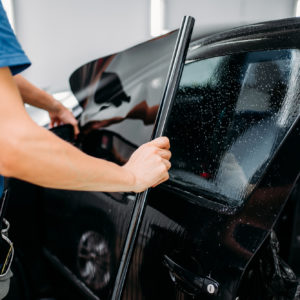Car windows do more than just give you a clear view of your vehicle’s surroundings. They also provide structural strength, enhance aerodynamics, and protect you from the elements. As a crucial part of your vehicle, they should be made of durable auto glass like laminated or tempered glass. While plexiglass might sound like a great option, manufacturers know better than to ignore the safety risks that come with using plexiglass for car windows.
What Is Plexiglass?
Also known as acrylic glass, plexiglass is a strong, lightweight thermoplastic that is often used as an alternative to glass. Its durability, effective light transmission, and simple processing make it a popular material for aquariums, watch glasses, and cutlery. While plexiglass is often used in aircraft windows and police riot control vehicles, it isn’t typically used in the windows of most cars.
Can You Use Plexiglass For Car Windows?
Compared to traditional glass, plexiglass is lighter, making it a popular choice for race car windows. The reduced weight can significantly improve the speed and handling, which is always a plus for race cars. For city cars, however, most manufacturers don’t use plexiglass for car windows.
What Are the Disadvantages of Automotive Plexiglass Windows?
As light and durable as plexiglass might be, it’s far from being the best choice when it comes to automotive windows. Here are some of the reasons why most manufacturers don’t use plexiglass for car windows:
Unfit for Extreme Temperatures
Acrylic glass is sensitive to extreme temperatures, especially the heat. Compared to automotive glass, it’s much more susceptible to heat damage.
Poor Protection Against UV Exposure
Automotive glass is typically treated to block UV radiation, protecting passengers and the car interior from UV damage. Unfortunately, this isn’t something plexiglass can offer. While treated plexiglass can offer UV protection to some degree, it isn’t enough to protect you from sunburns or your cabin from heat damage.
Prone to Scratches
One of the biggest downsides to plexiglass is its poor scratch resistance. Stones, insects, and other debris can hit and scratch your windows, leaving surface abrasions that can block your visibility.
Greater Impact Resistance
Plexiglass has greater impact resistance than automotive glass, which means it won’t break as easily as traditional glass. When automotive glass breaks, it shatters into small, blunt pieces that can minimize injury to passengers. On the other hand, plexiglass will break into large pieces that can hurt the passengers. If the door is stuck, passengers can also find it hard to break the window and escape the vehicle.
Expensive
Plexiglass doesn’t always come cheap. You might score some for a good price, but high-quality plexiglass is usually more expensive than standard glass. Thicker pieces that have been treated for additional properties like better scratch resistance and reduced glare will also cost more.
What Are the Advantages of Using Plexiglass?
Of course, we aren’t saying plexiglass is all bad. Here are some of the pros of acrylic glass:
Lighter Than Glass
Compared to automotive glass, plexiglass is much lighter. This is one of the biggest reasons why it’s often used in aircrafts, greenhouses, and submarines. The reduced weight makes handling and transportation easier while reducing costs related to heavy-lifting equipment.
Nontoxic
Plexiglass is made from polymethyl methacrylate (PMMA), a nontoxic substance that doesn’t release any toxic fumes or chemicals that are harmful to humans.
Environmentally Friendly
Producing plexiglass typically uses less energy than other materials, such as glass and metal. Unlike other types of plastic, it can also be recycled and reused. However, many recycling centers aren’t equipped with the right tools to recycle acrylics, making it hard to dispose of them.
While plexiglass comes with its fair share of advantages, these hardly outweigh the risks that come with it. Manufacturers are well aware of this fact, which is why you’ll rarely find a passenger vehicle that has plexiglass windows. Laminated and tempered glass might be heavier, but they’re so much safer than plexiglass.
Get New Door Glass Shipped to Your Doorstep
Door glass is tough, but it can degrade over time or abruptly shatter during a collision. Prioritize replacing a broken door glass to stay safe, comfortable, and secure from outside threats and unpleasant conditions. You can have a replacement door glass delivered to your doorstep if you order it from CarParts.com.
CarParts.com operates multiple distribution centers in strategic locations throughout the US. When you purchase new door glass from our online shop, our nearest facility ships the replacement part to your address. If you submit your order before noon ET, the door glass will arrive in several business days, allowing you to quickly repair your vehicle.
Find the right door glass for your car or truck by plugging its details into our website’s vehicle selector. You can further narrow the search by selecting the relevant filters, such as only showing the ones with ongoing deals.
So, what are you waiting for? Order a new door glass at CarParts.com today to enjoy big savings on a high-quality part.
Any information provided on this Website is for informational purposes only and is not intended to replace consultation with a professional mechanic. The accuracy and timeliness of the information may change from the time of publication.



















